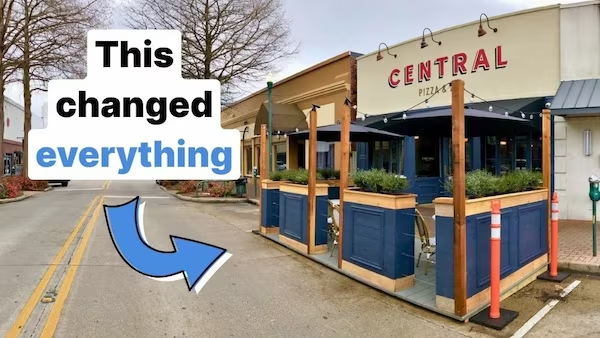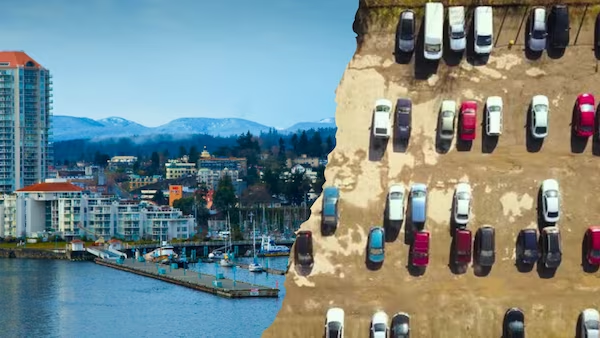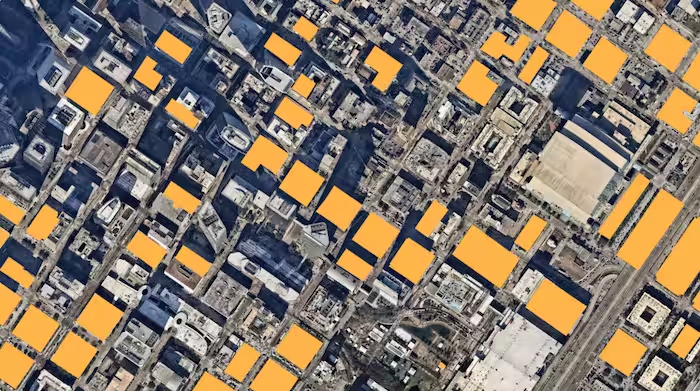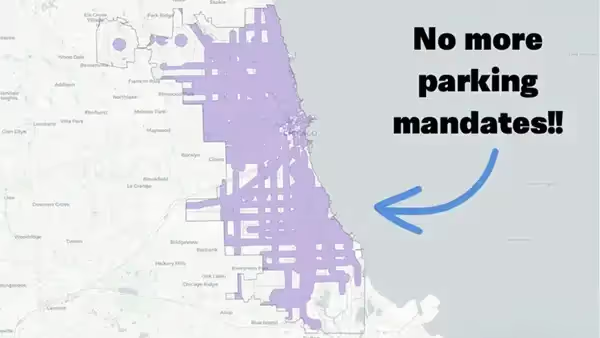Editor's Note: The challenges our cities face are growing, but so is the strength of this movement. Every story we share, every idea we spread, and every tool we build exists because people like you are committed to showing up. Your membership isn’t passive—it’s the momentum that makes change possible.
John Locke probably wasn’t thinking about parking when he wrote his "Second Treatise of Government." But his 17th-century principle — what’s now called the Lockean Proviso — might still help us understand the tangled web of private property rights, public space, and parking rules in North America today.
The proviso says that it’s okay to claim private property from the commons — if your use doesn’t leave others worse off. In Locke’s words, your claim is legitimate only if you leave “enough and as good” in the commons for everyone else. It's a basic rule of fairness: use what you need, but don’t take so much that others are pushed out.
This isn’t just academic theory. The Lockean Proviso captures something many of us feel intuitively when we see the side effects of private decisions, like when someone builds without enough parking and the impact spills out into crowded curbs, blocked sidewalks, and jammed bike lanes. In that light, parking minimums can seem like a reasonable safeguard: a way to keep private actions from damaging shared public space.
But that line of thinking comes with serious costs, not just for private projects but for public ones, too.
The High Cost of the “Minimum”
City parking codes often treat land use as static, demand as predictable, and public streets as free car storage. The result is a rigid, one-size-fits-all set of rules that rarely matches how people actually live, travel, or build.
Private projects — especially small, local, or incremental ones — are often blocked by these requirements. Want to turn a storage room above your shop into a small apartment? You’ll probably need to add a parking space. Want to open a corner café in a walkable neighborhood? You might be told to build off-street parking, even if there’s already good transit service. These rules create friction at every step. For many small builders or businesses, they quietly shut things down.
The problem is even worse for housing designed for people who drive less. Senior housing or affordable apartments often have to build far more parking than they need, just to meet the code. That parking takes up land, inflates costs, and cuts the number of homes that can be built. Ironically, the people most likely to walk, carpool, or use transit are the ones forced to fund unused parking spots.
Public projects suffer just as much. Schools, libraries, parks, community centers, and arenas are often built around huge parking requirements. The result? We get softball complexes marooned in seas of asphalt at the edge of town, instead of community spaces woven into walkable neighborhoods. Parking minimums don’t just shape where we put things — they shape what gets built, who has access, and how life unfolds.
When Private Choices Strain Shared Spaces
Parking demand is real. When people drive, they need somewhere to leave their car. If that need isn’t met, the overflow hits the public. In Lockean terms, when a private project pushes its burden onto the curb, sidewalk, or street, it may be taking more than its fair share of the commons.
So here’s the dilemma: If private developments don’t supply enough parking, they can create problems. But if we require parking for every project — rigidly, equally, and without context — we create a different set of problems: wasted land, unaffordable housing, and streets designed around empty lots instead of human life.
The truth is that both sides have a Lockean point.
- Requiring parking helps protect shared curb space from overuse and conflict.
- Removing parking rules frees communities from waste, rigidity, and unproductive expansion.
The curb and the properties beside it form a shared system. Managing that space fairly requires more than blanket rules or letting everyone fend for themselves.
I’ve spoken with people who are genuinely alarmed that their neighborhood is in a parking crisis — it was fine until it wasn’t. I’ve also met just as many people who are alarmed by a housing crisis or a retail crisis, often on the very same block. And all of these issues feed into a deeper fear: that we’re losing our ability to build places where people can truly thrive.
Pricing the Commons, Not Mandating It
One better tool is the Parking Benefit District (PBD), an idea made popular by economist Donald Shoup. Shoup didn’t use Lockean language, but the idea fits perfectly. A PBD treats on-street parking as a public asset, not something to be given away. Drivers pay to use it, and the money stays local — used for cleaner sidewalks, new trees, better lighting, or safer streets.
Instead of using fixed rules to prevent harm, this approach uses pricing and local management to balance supply and demand in real time. Builders still carry responsibility, but they can meet it in fair, flexible ways based on what’s actually needed.
This also spreads costs in a smarter way. If a 300-seat theater brings 100 cars to your street, those visitors contribute to the public space they’re using. Parking becomes part of a healthy give-and-take, not a free-for-all.
Ironically, this approach can also protect curb parking. When money from meters goes toward improving the block, parking becomes more valuable, not just as space for a car but as part of a thriving public place.
I saw this potential up close. Back in 2017, while I was living in the city of Richmond and serving as a local pastor, I noticed how often the news was full of complaints about parking in Steveston Village — a beautiful and historic fishing village that draws locals and tourists alike. People said there wasn’t enough parking, but the three-hour free curbside stalls were always full.
I emailed a few City Council members and suggested they look into Parking Benefit Districts — a way to make better use of the curb while reinvesting in the neighborhood. To my surprise, Councillor Carol Day invited me to present the idea to the city’s Transportation Committee. I was nervous, but I went for it.
The response from committee members was curious and engaged. They asked city staff to explore the concept further, specifically for Steveston Village. But eight years later, they’re still trying to untangle the issue — and there’s been no public mention of Parking Benefit Districts since.
Many business owners don’t want their customers to pay for parking, and customers don’t want to pay either if the benefits of paying aren’t felt. The idea that meter revenue could go directly into street improvements — making the area cleaner, greener, and more attractive — just doesn’t seem to break through. Even if that money would more than make up for the inconvenience, and even if it meant relying less on city grants and top-ups, the message hasn’t landed.
Personally, I’d take 100 on-street parking spaces if they came with shady, well-trimmed trees along the sidewalk and a safer, more welcoming street. But changing the way we treat the curb is about more than design. It’s about what we value — and how we negotiate the balance between individual convenience and shared benefit.
Flexibility, Not Formulas
Rigid parking rules act like we can predict the future — that every building will always need the same number of spaces, forever. But people don’t live like that.
Take my son’s school. It was built in 1993 for 150 students, with a matching parking lot. Over time, the school grew to serve 300 students, but the lot stayed the same size. Nobody cared for years. But when we proposed adding just four more classrooms, the city suddenly demanded parking — not just for those rooms, but for two decades of retroactive growth, plus new updated standards. We were told to tear up part of the playing field to make room.
That wasn’t about parking. That was about checking a box.
And often, even when the required parking space is built, it doesn’t get used for cars. In many homes, required spaces go into garages, which often become gyms, workshops, game rooms, or storage. The spot exists on paper, but not in practice. If on-street parking is free and convenient, people use it instead of cleaning out their garages.
We’re not just overbuilding parking; we’re misplacing and mismanaging it. Meeting a rule doesn’t always mean meeting a real need.
A Path Forward
The Lockean Proviso reminds us that private rights come with public responsibilities, especially when it comes to how we use land and space. But blanket rules are a clumsy way to honor that idea. They assume one-size-fits-all answers in places that are anything but.
What we need is a system rooted in fairness, transparency, and local insight. A system that lets communities make smart tradeoffs based on real conditions.
Parking Benefit Districts strike that balance. They recognize that there will always be a demand for parking. But they give us better ways to meet that need — ways that are flexible, fair, and focused on strengthening the shared environment.
Not at its expense.





